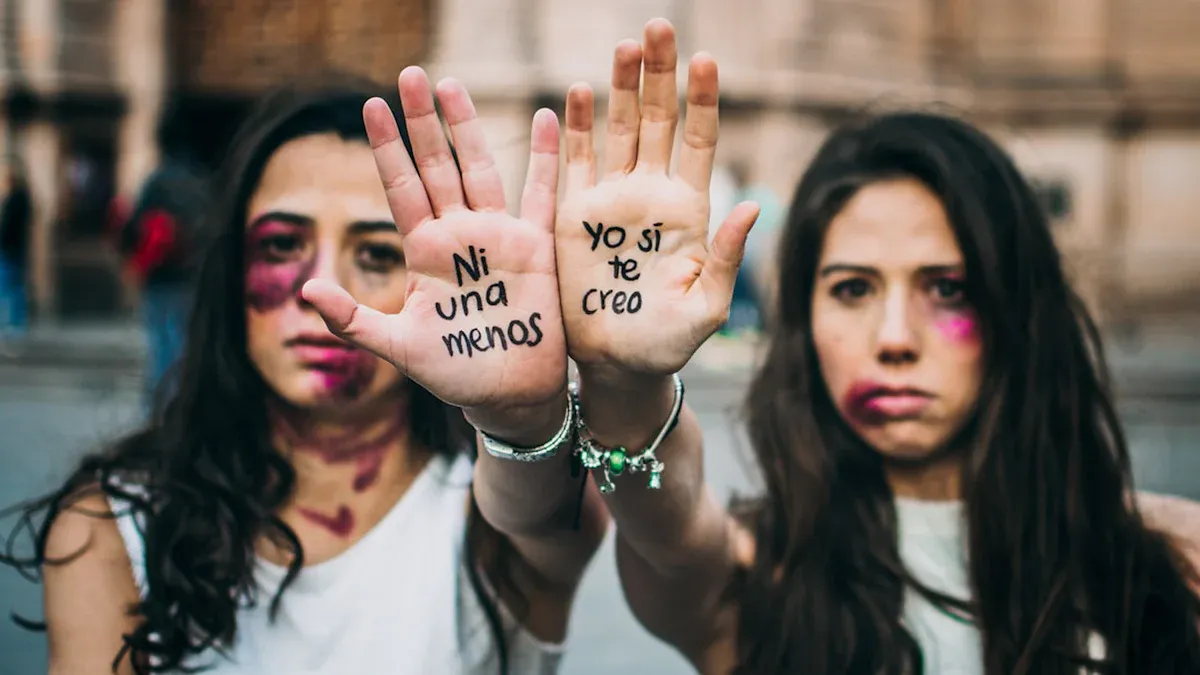
What Is the Emergency Sign for Help in Sign Language
You can use a special emergency sign in American Sign Language (ASL). Make the letter 'E' with your hand, then shake your hand from side to side. Knowing this sign and the sign language for help can save lives. It is especially important in urgent situations. Many people still do not know emergency signs. After an awareness campaign, more people learned about stroke warning signs. The number of people who knew at least two stroke warning signs increased significantly.
| Measure | Before Campaign | After Campaign |
|---|---|---|
| Knew ≥2 stroke warning signs | 31% | 67% |
Learning and sharing these signs, including the sign language for help, helps keep you and others safe.
Key Takeaways
- You can learn the ASL emergency sign by making the letter 'E' and shaking your hand. This shows you need help fast. Use the ASL help sign with both hands to ask for help or give help. This makes your message clear in many situations. The universal emergency hand signal lets you ask for help without talking. Use it if you cannot speak or feel unsafe. Practice emergency signs often. Use clear and strong movements and show your feelings on your face. This helps people understand you. Watch for signs that others are in trouble. Respond fast to help keep everyone safe during emergencies.
Emergency Sign in ASL

How to Do the Emergency Sign
You can use the emergency sign in American Sign Language (ASL) to quickly show you need urgent help. This sign uses the letter "E" handshape. Here is how you do it:
- Make a fist with your thumb touching your fingertips. This forms the letter "E" in ASL.
- Hold your hand up at about chest level.
- Shake your hand side to side a few times. Keep your fingers in the "E" shape while you shake.
Tip: Make your movements clear and strong. This helps others notice you need help right away.
You do not need to say anything when you use this sign. People who know ASL will understand you are in an emergency.
When to Use the Emergency Sign
You should use the emergency sign when you face danger or need help fast. This sign works well if you cannot speak or if loud noise makes it hard to call for help. You can use it in many places, such as at home, in public, or during a disaster.
Many people in the deaf, hard of hearing, and deafblind communities use this sign to get help. During the COVID-19 pandemic, people faced new barriers to communication. Agencies started using live ASL interpreters at press conferences so everyone could understand emergency updates. Local groups also found new ways to reach deafblind clients safely during stay-at-home orders. Emergency responders learned to watch for signs like a large "X" drawn on a person's back or the emergency sign in ASL. These steps helped people get help quickly, even without words.
- You might use the emergency sign if you see a fire and need to warn others.
- You can use it if you feel unsafe in a public place.
- You may need it if you cannot speak because of injury or illness.
Note: Training and awareness help more people recognize the emergency sign. Many states now include ASL interpreters in emergency briefings. Community education and planning make sure everyone can get help when they need it.
You help keep yourself and others safe when you know and use the emergency sign in ASL.
Sign Language for Help
ASL Help Sign Steps
You can use sign language for help in many situations. The ASL sign for "help" uses both hands. Start by making a fist with your dominant hand and keep your thumb pointing up. This handshape looks like the letter "A" in ASL. Place your fist on the open palm of your other hand. Your palm should face up. Next, lift both hands together a short distance, as if you are offering help to someone.
Tip: Keep your movements clear and steady. This makes your message easy to understand.
Many people learn sign language for help as one of their first emergency signs. The BMC Health Services Research article shows that most emergency plans do not include the needs of Deaf or hard-of-hearing people. Out of 2,800 emergency plans, only eight mentioned the word "Deaf." This shows why you need to know and use sign language for help. Training programs now teach law enforcement and emergency workers how to use these signs. These programs help more people feel confident and ready to respond in emergencies.
Direction and Meaning
The direction you move your hands changes the meaning of the sign language for help. If you move the sign toward yourself, you ask for help. If you move it toward another person, you offer help. For example, lifting your hands from your chest toward someone means "I will help you." Bringing your hands from another person toward yourself means "Can you help me?"
Facial expressions also add meaning. Raise your eyebrows to turn the sign into a question, like "Do you want help?" A serious face shows you need help right away. The ASL sign for help can change based on the situation and your feelings.
Disability Rights California explains that having ASL interpreters during emergencies saves lives. When you use sign language for help, you give clear information to emergency workers. This helps everyone stay safe, especially during disasters like wildfires or health emergencies.
Universal Emergency Hand Signal

How to Do the Universal Signal
You can use the universal emergency hand signal if you feel unsafe. This signal is easy to do and remember. Victim Services of S.D.G. & A. says to start with your hand up, palm out. Next, put your thumb into your palm. Then, fold your fingers down to cover your thumb. It looks like your thumb is trapped by your fingers. Repeat this motion a few times so people notice.
Tip: Use this signal on video calls or in person if you cannot talk. Make your movement clear and steady so others understand.
In some places, people use other emergency hand signals. You might see these at airports or big events. Ground crew and rescue workers use special signals to talk to pilots and staff. For example, crossing arms above the head means "stop." Waving a hand in a fanning way means "fire." Sometimes, people use paddles or wands to make signals easier to see, especially at night.
When to Use It
Use the universal emergency hand signal if you need help but cannot speak. This signal lets you ask for help without alerting someone who may hurt you. People use it in cases like domestic violence, bullying, or feeling unsafe in public.
Hospitals, airports, and public places use different emergency codes and signals to keep people safe. Here is a table with some common emergency codes and what they mean:
| Emergency Code | Situation Description | What Happens Next |
|---|---|---|
| Code Blue | Medical emergency (like cardiac arrest) | Medical staff respond fast to help. |
| Code Black | Bomb threat or suspicious package | Security and police act, and people may leave. |
| Code Gray | Violent or combative person | Staff call for help and protect everyone. |
| Code Yellow | Missing person | Staff search and tell authorities. |
| Code Green | External disaster | Hospital starts disaster plans. |
You help keep yourself and others safe when you know these signals. Always be ready to use the universal emergency hand signal if you need help.
Tips for Emergencies
Clarity and Safety
Clear communication can help save lives in emergencies. When you use sign language for help, make your signs big. Try to keep your movements simple and your hands steady. This makes it easier for others to understand you fast, even if they do not know much sign language.
Tip: Always look at the person you are talking to. Good lighting helps people see your hands and face better.
Studies show that clear messages help keep people safe. People follow instructions better when they understand them. At work, good communication lowers accidents and unsafe actions. Leaders who share clear safety messages help everyone stay safer. These ideas work for sign language too. If you use simple signs and clear facial expressions, people know what you need.
The COVID-19 pandemic made things harder with masks and different local signs. There were over 15 signs for "coronavirus" around the world. This made it hard for people to get the right information. Using standard signs and practicing with family or friends helps you get ready for emergencies.
- Practice emergency signs often.
- Make an emergency plan that uses sign language.
- Learn signs for your area and common emergencies.
Recognizing Signs
You should watch for changes in how people act during emergencies. People may use sign language for help, but they might also act stressed or different. Look for sudden changes in how people move, talk, or use their phones. Sometimes, people post more online or stop talking for a while. These changes can mean something is wrong.
- Notice if someone looks worried or scared.
- Watch for quick hand signs or sudden actions.
- Pay attention to silence followed by fast movement.
During emergencies, people feel strong emotions. They may act fast or seem confused. If you see someone using emergency signs or acting differently, check if they need help. Fast and clear information helps everyone respond better. When you stay alert and know what to look for, you help keep your community safe.
You now understand how the ASL emergency sign, the ASL help sign, and the universal emergency hand signal are different. Each one has its own use. These signs help you tell others you need help fast. Practicing these emergency signs makes you feel more sure of yourself and safer.
- Studies found that 96% of students got better at non-verbal communication after practicing.
- Thinking about what you learned helps keep patients safer and makes communication stronger.
Teach these signs to others and always be ready for emergencies.
FAQ
What if someone does not understand the emergency sign in ASL?
You can repeat the sign or try another clear gesture. You may also use the universal emergency hand signal. If possible, write a note or point to a danger. Stay calm and keep trying to get attention.
Can you use the emergency sign in other countries?
You can use the ASL emergency sign in the United States and Canada. Other countries may use different signs. The universal emergency hand signal works in many places. Always check local signs if you travel.
How can you teach children emergency signs?
Start with simple signs like "help" and "emergency." Practice together often. Use games or flashcards to make learning fun. Remind children to use big, clear movements. Praise them when they remember the signs.
What should you do if you see someone using an emergency sign?
Act quickly. Check if the person is safe. Call for help or alert others nearby. Stay with the person until help arrives. Your fast response can save a life.
Do you need to use facial expressions with emergency signs?
Yes, you should use facial expressions. A serious or worried face shows you need help right away. Expressions make your message stronger and easier to understand.
